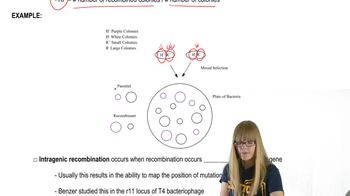Individuals with phenylketonuria cannot convert phenylalanine to tyrosine. Why don't these individuals exhibit a deficiency of tyrosine?
 Verified step by step guidance
Verified step by step guidance
Verified Solution
Key Concepts
Phenylketonuria (PKU)
Tyrosine Synthesis

Dietary Management

A short RNA molecule was isolated that demonstrated a hyperchromic shift (see Chapter 10), indicating secondary structure. Its sequence was determined to be
5'-AGGCGCCGACUCUACU-3'
If the molecule were an internal part of a message, what amino acid sequence would result from it following translation? (Refer to the code chart in Figure 13.7.)
A short RNA molecule was isolated that demonstrated a hyperchromic shift (see Chapter 10), indicating secondary structure. Its sequence was determined to be
5'-AGGCGCCGACUCUACU-3'
If the molecule were a tRNA fragment containing a CGA anticodon, what would the corresponding codon be?
Refer to Figure 13.7 to respond to the following:
Shown here is a hypothetical viral mRNA sequence:
5'-AUGCAUACCUAUGAGACCCUUGGA-3'
Assuming that it could arise from overlapping genes, how many different polypeptide sequences can be produced? What are the sequences?
Most proteins have more leucine than histidine residues, but more histidine than tryptophan residues. Correlate the number of codons for these three amino acids with this information.
